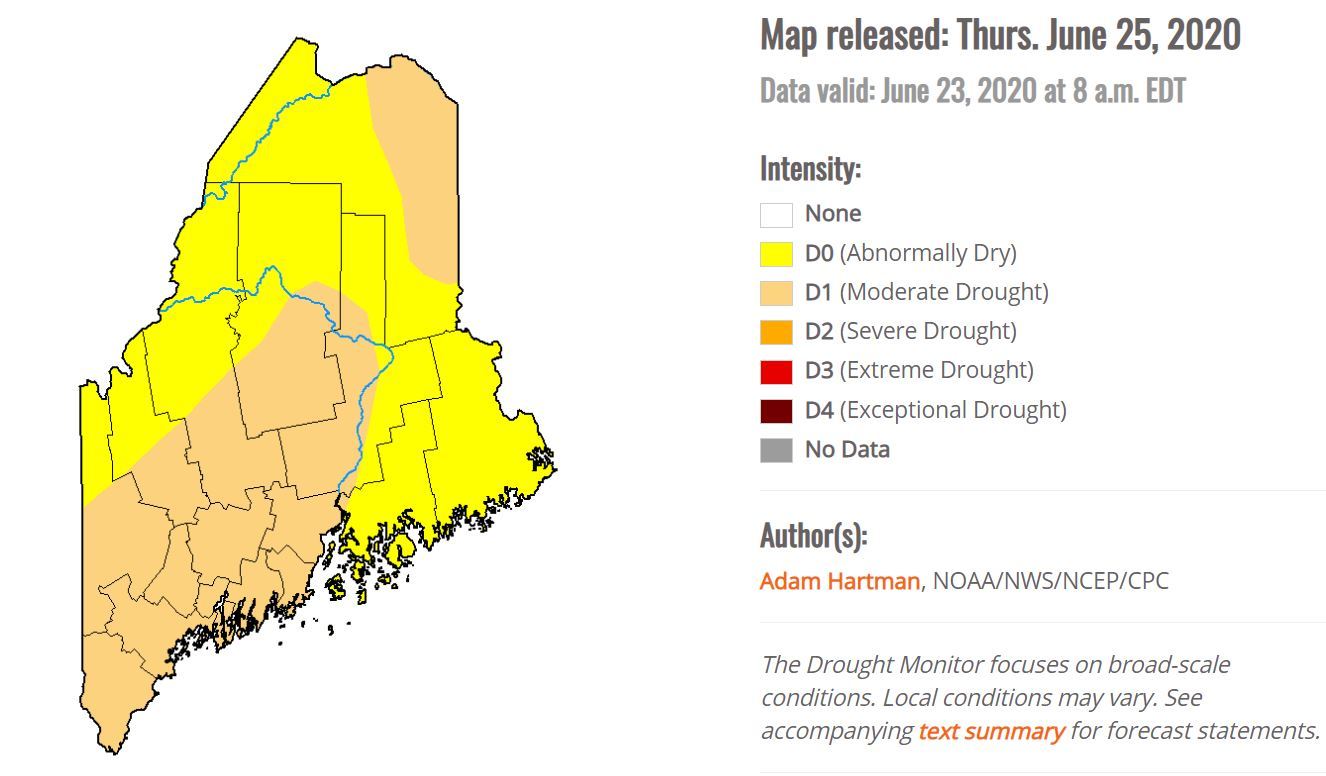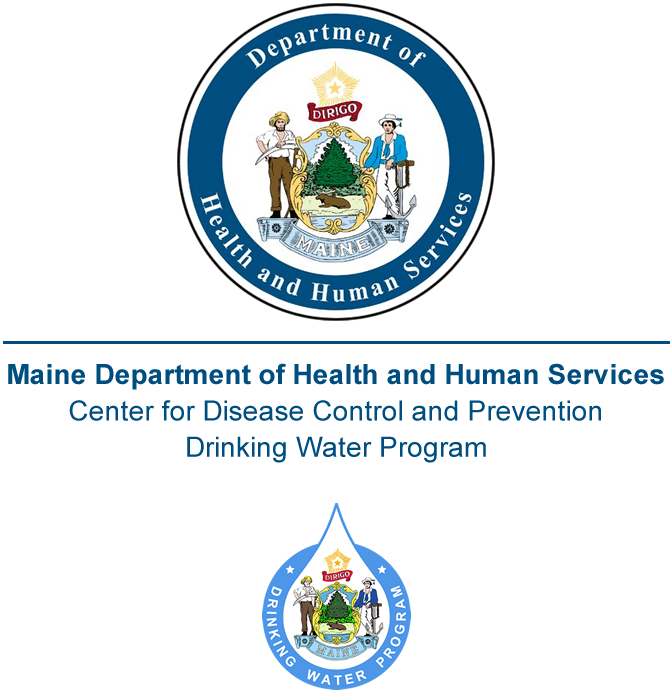Drought Preparedness Resources for Public Water Systems
Maine Department of Health & Human Services sent this bulletin at 06/30/2020 02:50 PM EDTHaving trouble viewing this email? View it as a Web page.
Drought Preparedness Resources for Public Water Systems
| A map released by the United States Drought Monitor on June 25, 2020 (displayed on the right) shows roughly half of the state of Maine as abnormally dry, the other half as being in a moderate drought. The National Oceanic and Atmospheric Association and the National Weather Service release maps showing precipitation deficits in the last 90 days. Recharge to surface and groundwater systems may be limited through the rest of the summer because water uptake by vegetation may increase due to dry conditions. Aquifers may be hit particularly hard as soils are dry and compacted, decreasing stormwater infiltration to groundwater. |  |
Drought conditions can significantly impact public water system operations. Sustained dry conditions may cause a deterioration of water quality, reduction in the capacity of a groundwater or surface water source, increased pumping costs, or other related issues. The Maine CDC Drinking Water Program (DWP) offers the following drought preparedness tips to public water systems for potential impacts to drinking water sources:
• Update your Emergency Response Plan for potential drought contingencies.
• Prepare employees and board members for a possible drought situation.
• Monitor your water supply at least weekly by taking readings of surface water or groundwater levels, and keep up-to-date with local and regional drought conditions (use the links to maps provided above).
• Communicate with mutual aid and emergency response partners such as your local emergency manager and/or county emergency management agency. Review emergency communication protocols and update if needed.
• Identify and communicate with critical customers, including your largest water users.
• Look into implementing voluntary or mandatory water conservation measures.
• Consider activating emergency backup sources (consult with DWP on this) or establishing new sources.
• Create outreach materials for the public on conservation efforts and activities.
These tips and the regional drought maps will also be available on the Drinking Water Program’s Drought Information webpage, currently in development. We will follow up with additional resources for drought response and recovery if the drought persists. We appreciate reports of any challenges you may face, and we will assist you in any way we can.
For questions regarding droughts, or to report a water shortage, please contact your DWP Public Water System Inspector, or call our main phone number at 207-287-2070.
Websites to learn more:
• United States Drought Monitor:
https://droughtmonitor.unl.edu/CurrentMap/StateDroughtMonitor.aspx?ME
• NERFC Precipitation Totals and Departures from Normal, NOAA's National Weather Service:
https://www.weather.gov/nerfc/watersupply
• EPA Incident Action Checklist - Drought:
https://www.epa.gov/sites/production/files/2015-06/documents/drought_0.pdf
• EPA Drought & WaterSense:
https://www.epa.gov/watersense/drought-watersense
• Maine CDC Drinking Water Program Homepage:

